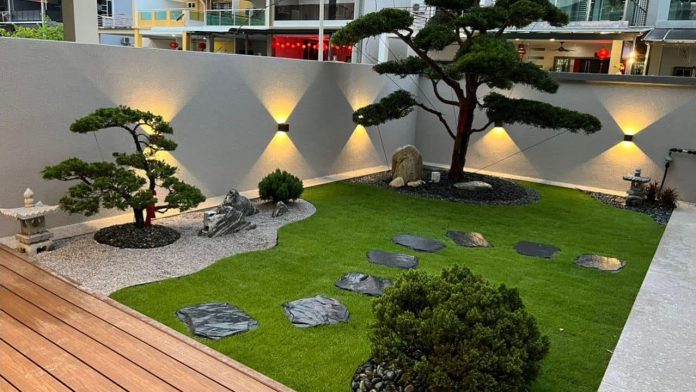Japanese Zen gardens, also known as karesansui, are tranquil landscapes designed to evoke peace, simplicity, and mindfulness. Rooted in centuries-old Japanese traditions, these gardens are characterised by their minimalist design, using natural elements such as sand, stones, and carefully chosen plants. A Zen garden can transform your outdoor space into a peaceful retreat, encouraging relaxation and meditation. Here’s how you can create your own serene outdoor space inspired by Japanese Zen gardens.
Understand the Philosophy of Zen Gardens
Zen gardens are more than just decorative landscapes; they are expressions of harmony and balance. The deliberate placement of every element symbolises larger natural forces, such as mountains, rivers, and islands, fostering a deeper connection to nature. When designing your Zen garden, keep in mind its purpose: to create a calming environment that promotes mindfulness and contemplation.
Choose the Right Location
Select a quiet and private area in your yard where distractions are minimal. Ideally, your Zen garden should be a space where you can retreat to clear your mind, meditate, or simply enjoy the view. If you’re incorporating it into a public or shared setting, such as an educational facility, consider its placement to ensure it complements the broader early learning landscape design principles.
Key Elements of a Zen Garden
A traditional Zen garden typically includes the following elements:
- Gravel or Sand: Representing water, raked gravel or sand forms the foundation of the garden. Use a rake to create ripples or lines that symbolise the flow of rivers or ocean waves.
- Stones and Rocks: These represent mountains or islands. Place them thoughtfully, focusing on asymmetry and natural groupings to achieve balance.
- Plants: While Zen gardens are often minimalistic in plant use, moss, small shrubs, and bamboo can add greenery and softness. Opt for low-maintenance plants that thrive in your climate.
- Boundaries: Bamboo fences or stone walls can help define the space and add to its sense of enclosure and tranquillity.
Designing for Flow and Balance
The layout of a Zen garden should follow a natural and harmonious flow – avoid overcrowding the space with too many elements, as simplicity is key. Focus on the balance between empty and filled spaces, allowing room for reflection and contemplation. Remember, less is often more in a Zen garden.
Incorporate a Water Feature (Optional)
Although traditional Zen gardens rarely include actual water, you can incorporate a small water feature like a stone basin or fountain for a modern twist. The sound of trickling water adds an extra layer of serenity to the space.
Maintaining Your Zen Garden
A Zen garden requires minimal maintenance, but regular care is essential to preserve its pristine appearance. Rake the gravel or sand to maintain patterns, remove fallen leaves, and trim any plants to keep the garden looking neat and intentional.
Integrating Zen Gardens into Broader Designs
Zen gardens aren’t just for private homes – they can also enhance public spaces, such as schools or community areas. Incorporating a Zen garden into an early learning landscape design can provide children with a calming area to explore mindfulness and connection to nature. Such spaces encourage young minds to slow down, observe, and reflect, fostering a sense of peace in bustling educational environments.
Find Your Zen Today
Creating a Japanese Zen garden is an enriching experience that brings tranquillity and beauty to any outdoor space. Whether you’re designing a private sanctuary or integrating a calming retreat into a larger project, these gardens are timeless symbols of harmony and mindfulness.








